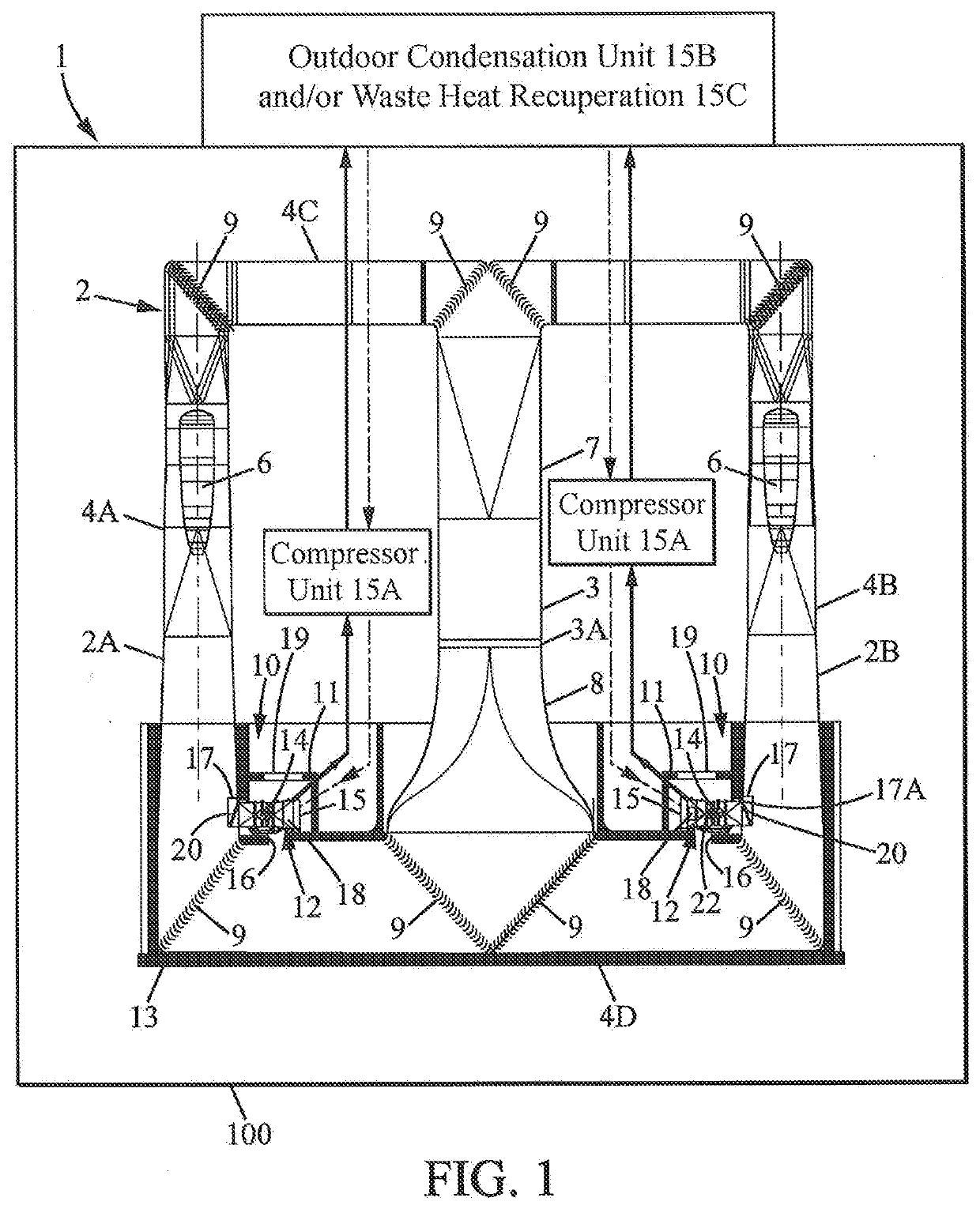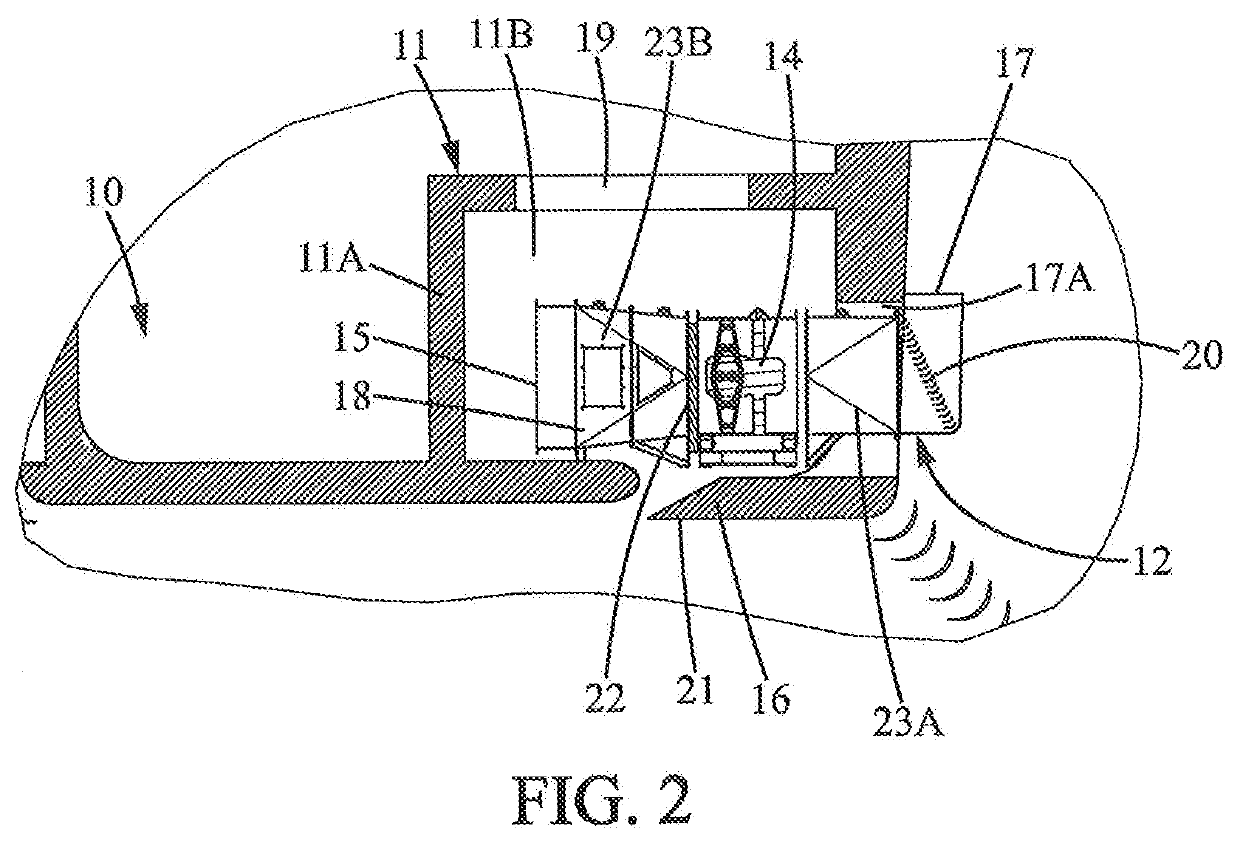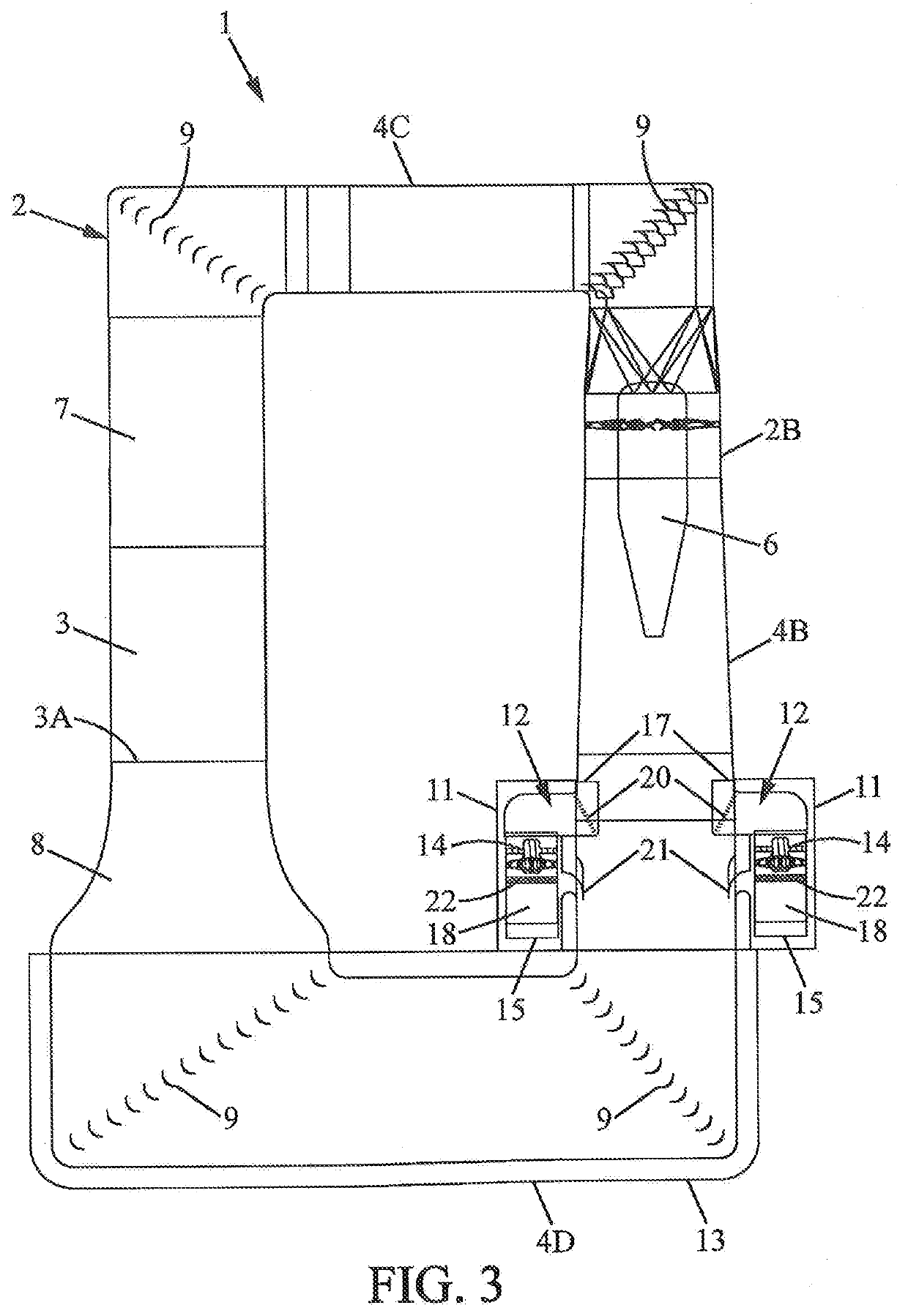Free Fall Simulator Cooling System
a simulator and cooling system technology, applied in the field of free fall simulators, can solve the problems of simulator users' faces, significant discomfort, simulator users' discomfort, etc., and achieve the effects of improving the quality of the air stream, improving the speed profile, and reducing the amount of heat being led away
- Summary
- Abstract
- Description
- Claims
- Application Information
AI Technical Summary
Benefits of technology
Problems solved by technology
Method used
Image
Examples
Embodiment Construction
[0037]FIG. 1 illustrates an example of the free fall simulator 1, in accordance with the free fall simulator according to claim 1. The free fall simulator 1 is installed in building 100.
[0038]The free fall simulator according to FIG. 1 comprises a flight chamber 3 which is accessible to users of the simulator 1. At the bottom of the flight chamber 3 is installed a safety net 3A (made of metal wire for instance), which serves as the floor of the flight chamber 3. Air flows through the net 3A, from bottom to top, effecting the lifting of the user of the simulator 1 upwards, where the force of the upwards streaming air cancels out the gravitational force acting on the user.
[0039]The remaining parts of the simulator 1 that are connected to the flight chamber 3 and through which the air flows, are described as a wind tunnel system 2. Together, the wind tunnel system 2 and the flight chamber 3 then form a cyclic wind tunnel. Upwards from the flight chamber 3, in the direction of the airfl...
PUM
 Login to View More
Login to View More Abstract
Description
Claims
Application Information
 Login to View More
Login to View More - R&D
- Intellectual Property
- Life Sciences
- Materials
- Tech Scout
- Unparalleled Data Quality
- Higher Quality Content
- 60% Fewer Hallucinations
Browse by: Latest US Patents, China's latest patents, Technical Efficacy Thesaurus, Application Domain, Technology Topic, Popular Technical Reports.
© 2025 PatSnap. All rights reserved.Legal|Privacy policy|Modern Slavery Act Transparency Statement|Sitemap|About US| Contact US: help@patsnap.com



